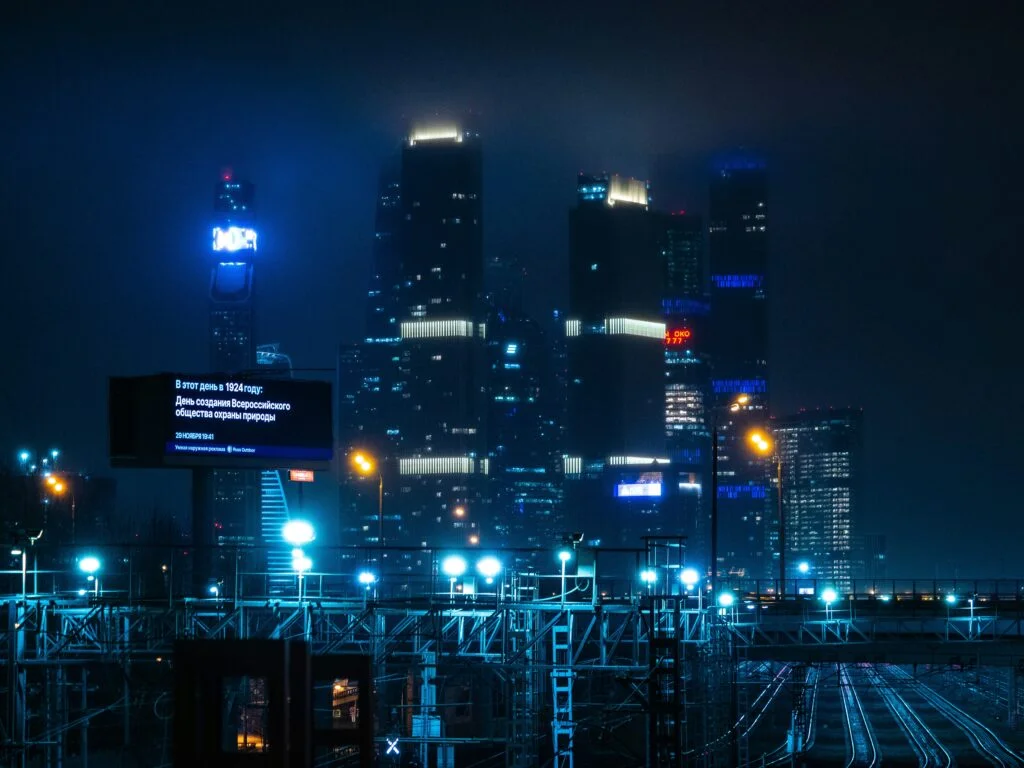
Urban Myths or Truth?
The idea of ‘secret’ cities has long captured the imagination of adventurers, historians, and casual explorers alike. They are often depicted in urban legends as mysterious locales shrouded in enigma, supposedly hidden from the eyes of the general public. This notion raises the question: do these secret cities actually exist, or are they mere figments of urban myth? To address this query, it is crucial to understand the factors that contribute to a city being classified as ‘secret’.
Central to the concept of ‘secret’ cities is the interaction between governmental policies and urban development. In certain instances, local or national governments may opt for secrecy regarding specific locations, particularly if they involve sensitive infrastructure, such as military bases, research facilities, or other critical installations. These decisions are often justified under the umbrella of national security; therefore, cities may be tagged as ‘secret’ due to the restricted access granted to them by authorities. Additionally, various cities, through their history and cultural significance, have become the subject of speculation, thus enhancing their ‘secret’ status in the public eye.
Moreover, social media and modern technology have played a significant role in shaping the narratives around these urban legends. The allure of uncovering hidden places often encourages people to share and amplify stories, creating an environment where each retelling enhances the mystery. While some of these narratives stem from actual places that are less frequented, others may be purely anecdotal, showcasing the multifaceted nature of urban experiences.
In evaluating the credibility of ‘secret’ cities, it becomes apparent that while myths abound, there might be elements of truth interwoven within them. The fascination surrounding these urban legends serves as a reflection of societal curiosity about the hidden aspects of urban life, driving individuals to seek out what lies beneath the veneer of familiar environments.
What Are ‘Secret’ Cities?
Secret cities, often shrouded in mystery and intrigue, are locations that possess unique characteristics distinguishing them from typical tourist destinations. A city can be deemed ‘secret’ based on several criteria, including restricted access, notable historical significance, and a level of government secrecy that effectively keeps it off the radar for most travelers. These cities often play crucial roles in military operations, classified research, or political activities, which further contributes to their enigmatic status.
One of the defining features of secret cities is their limited accessibility. This could mean that entry is restricted to authorized personnel only, often due to national security concerns. For example, some cities may host government facilities or military installations that are not open to the public. The presence of such installations means that a significant portion of local infrastructure and operations may be hidden from casual observers, leading to an atmosphere of exclusivity.
Another critical aspect of what makes a city ‘secret’ is its historical significance, often intertwined with past government actions or geopolitical events. Locations that played pivotal roles during wartime or existed during critical historical moments may be less publicized to maintain a particular narrative or protect sensitive information. These cities can serve as reminders of historical events that some would prefer to keep buried.
Additionally, political sensitivities play a substantial role in determining the secrecy of a city. Areas with contentious political histories or ongoing conflicts may be avoided by tourists, either due to safety concerns or because they are deemed unsuitable for public visibility. This lack of attention can render the city ‘secret,’ as it remains largely unvisited and unexplored. Such cities reveal a tantalizing glimpse into the intersection of politics and urban life, highlighting the complexities that can define America’s and the world’s hidden landscapes.
Cold War-Era Examples
The Cold War, spanning from the late 1940s to the early 1990s, fostered an environment of intense political and military tension, leading to the establishment of various secret cities across the globe. These cities were primarily created to support clandestine operations linked to national security and intelligence activities. One prominent example is Oak Ridge, Tennessee, which was pivotal during the Manhattan Project. This city, initially shrouded in secrecy, played a crucial role in the development of atomic weapons, with its facilities hidden from public knowledge. The government’s decision to conceal such a significant undertaking exemplifies the level of secrecy maintained during this tumultuous era.
Another noteworthy example is the city of Greenbrier in West Virginia, which harbored a secret bunker meant to protect the U.S. Congress in the event of a nuclear attack. Built within the Greenbrier resort, this facility remained undisclosed for decades, representing the government’s strategic planning during the Cold War. Such initiatives were aimed at safeguarding the nation’s leadership, reflecting a pervasive fear of Soviet aggression and nuclear warfare. The existence of these hidden cities demonstrates how the Cold War propelled investments in covert operations, architecture, and urban development, all integral to military preparedness.
Even in the contemporary landscape, the relevance of these secret Cold War cities continues. They serve as reminders of a bygone era characterized by paranoia and a quest for dominance. While many of these locations have been declassified and opened to the public, certain aspects of their history remain obscure, often overshadowed by their original purpose. The government’s prioritization of secrecy during the Cold War period underscores the significant lengths to which authorities would go to protect national interests. These examples reveal the intricate interplay between urban development, military strategy, and government secrecy that defined the era.
The Top 5 Hidden Urban Zones
Throughout the world, various urban zones have managed to remain under the radar of mainstream tourism. These hidden cities intrigue explorers who seek unique experiences away from the typical attractions. Here are five of the most compelling secret cities that are often overlooked.
The first hidden urban zone is Chefchaouen, located in Morocco. Renowned for its stunning blue-painted buildings, this small town in the Rif Mountains offers a picturesque setting amidst lush landscapes. Its remote location makes it less accessible than other Moroccan cities, thus preserving its tranquil charm and mystique. Visitors often seek Chefchaouen for its stunning hiking trails and local artisanal crafts.
Next is Gjirokastër in Albania. This UNESCO World Heritage site features well-preserved Ottoman architecture and is often described as a hidden gem of the Balkans. The city’s cobbled streets and historic fortress draw in those interested in culture and history, yet it has not yet been overrun by tourists. The allure of Gjirokastër lies in its relatively undiscovered nature, making it a perfect destination for authenticity seekers.
A more modern secret city is Hampi in India. Once the capital of a thriving kingdom, it is now known for its impressive ruins and stunning landscapes. Often excluded from mainstream travel itineraries, Hampi offers unique insights into India’s rich history. The city’s remote setting in Karnataka facilitates a serene exploration of ancient temples and surreal rock formations.
Matera in Italy is another intriguing urban zone known for its ancient cave dwellings. This city has gained attention in recent years but still holds a fraction of the tourist traffic compared to cities like Rome or Florence. The Sassi di Matera, its historic district, has been recognized for its distinct architecture, providing visitors with a glimpse into both past and present living conditions.
Finally, Tbilisi, the capital of Georgia, encapsulates a unique blend of cultures. With its vibrant architecture and rich history, Tbilisi remains a lesser-known destination in Europe. The city’s stunning landscape along the banks of the Kura River, coupled with its hospitable atmosphere, creates an inviting yet discreet travel experience.
City Name (Country): Why It’s Hidden
The city in focus has become somewhat of a mystery to tourists and travel enthusiasts alike. Nestled in a picturesque landscape, it possesses an allure that remains largely untapped. One prominent reason for its secrecy lies in the government’s imposed restrictions, which severely limit access for non-residents. These regulations are often rooted in historical events, political sensitivity, or strategic significance, rendering the city a less attractive destination for conventional tourism.
Moreover, safety concerns play a crucial role in keeping this urban zone off the tourist radar. The city has experienced a notable level of unrest, whether due to social upheaval or ongoing conflicts that create an environment perceived as unsafe for outsiders. The lingering sense of instability casts a shadow over its rich cultural tapestry, discouraging both visitors and potential investors from establishing a presence in the area.
In addition to political and safety concerns, geographical isolation contributes to the city’s obscurity. Difficult terrain and limited transportation infrastructure further complicate access. Unsuitable travel conditions, whether due to weather patterns or challenging paths, can deter even the most adventurous of travelers. As a result, the city remains shrouded in a veil of secrecy, often overshadowed by more accessible and commercially viable urban destinations.
Another factor influencing its hidden status is the lack of promotional efforts by local authorities. Without a concerted push to market the city, fewer people are aware of its existence or the treasures it holds. The combination of these factors promotes an atmosphere that feels simultaneously alluring and inaccessible, ensuring that the city remains off the maps of modern travel enthusiasts seeking to explore beyond the beaten path. As the world continues to open up post-pandemic, it will be intriguing to observe how these dynamics evolve over time.
Known Facts and Rumors
The fascination surrounding hidden cities often stems from a combination of historical anecdotes, local legends, and a sprinkle of intrigue that keeps them alive in the public imagination. For instance, in the heart of the United States, there are whispers about a city built entirely underground in the early 1900s. It is said that this subterranean haven was created as a refuge against extreme weather and other natural threats. While factual documentation remains scarce, the whimsical tales of secret passageways and hidden chambers continue to inspire urban explorers eager to uncover the city’s mysteries.
Another city that piques curiosity is located in Eastern Europe, where locals share stories of inexplicable disappearances and paranormal occurrences. This longevity of folklore creates a rich tapestry of culture that contrasts sharply with the normality of nearby inhabited areas. Interviews with residents often reveal tales of lights flickering mysteriously at night, leading to rampant speculation about lingering spirits or otherworldly beings. Such intriguing stories enhance the allure of this enigmatic location, making it a site of interest for tourists looking for something beyond the ordinary.
<pin a="" abound="" alike.="" and="" archaeological="" architecture="" around="" artifacts="" asia,="" behind="" beneath="" build="" city="" civilization,="" connection="" culture.="" digs="" during="" elements,="" enticing="" event,="" exist="" explore,="" fascination.="" from="" guides="" heightening="" historians="" historic="" history="" hunters="" its="" layers="" learn,="" leaving="" local="" lost="" mysterious="" narratives="" occasionally="" of="" often="" only="" overnight="" p="" past,="" purportedly="" question="" regarding="" remnants="" revolves="" rumors="" sense="" sprinkle="" stories="" such="" surface.
These facts and rumors surrounding secret cities attest to the power of storytelling in shaping cultural identity. The blend of truth and myth, coupled with an undeniable allure, ensures that these hidden gems continue to captivate the imaginations of those who seek them.
Are People Living There?
The existence of secret cities raises intriguing questions about the people who inhabit them. Contrary to popular belief, these concealed environments are not entirely devoid of life. There are often communities residing within these secretive urban areas, consisting of individuals from diverse backgrounds. Many of them may be federal employees, scientists, or contractors who are involved in classified projects, while others may be locals who have lived there for generations, unaware of the city’s secretive nature. The interplay between residents and their clandestine surroundings often leads to a unique lifestyle.
Living in a secret city can be both a privilege and a challenge. Inhabitants often live under strict regulations, with limited access to the outside world and certainly a diminished public presence. This can impact their ability to socialize and interact with outsiders, as most interactions are confined to work-related activities. Residents may have to comply with secrecy protocols that encompass various aspects of their daily life, from employment to personal relationships. Consequently, this can create an insular community where information is closely guarded, and norms are shaped by the needs of secrecy.
<pmoreover, a="" alienation="" amidst="" among="" and="" another,="" both="" burden="" camaraderie="" celebrating="" challenges="" characterizes="" cities="" city="" clandestine="" common="" connect="" connection="" depending="" due="" encompassing="" existence.
Getting Close (but Not Too Close)
In the realm of travel, some destinations are shrouded in mystery and intrigue, often tantalizing adventurous explorers eager to uncover hidden gems that the government may prefer to keep under wraps. These secret cities, while alluring, require a delicate approach to access. While the thrill of discovery adds to the allure, travelers must prioritize caution and respect for boundaries when venturing into these less-trodden paths.
Travelers often employ various methods to reach these elusive locations. Many rely on local knowledge, tapping into online forums or discreet travel blogs that hint at access points and lesser-known routes. Others may seek out guides who are familiar with the region, enabling them to navigate the complexities of these secret areas safely. Understanding the geography and laws surrounding these cities is also essential to avoid any legal ramifications that might stem from unauthorized entry.
It is crucial to recognize that many of these secret cities may be restricted for valid reasons, including privacy, security, and conservation efforts. When approaching these locations, a respectful attitude is paramount. This means adhering to any local regulations and being mindful not to disturb the fragility of the environment. Observing from a distance is often the best course of action; rather than encroaching upon these hidden wonders, it may be more responsible to appreciate them from afar.
Ultimately, the allure of secret cities lingers in the thrill of the chase, the excitement of exploration, and the respect for the unknown. Those who dare to uncover these destinations must be seasoned in both adventure and prudence, ensuring that their curiosity does not overshadow the integrity of the places they wish to explore. Travel is not merely about the destination; rather, it lies in the journey and the respect shown for the paths taken along the way.
Legal Risks and Advice
Exploring secret cities can present a range of legal risks that travelers must understand and navigate. These hidden urban areas, often shrouded in mystery or protected by government regulations, may have laws specific to their location. As such, travelers should be aware of potential trespassing laws, prohibitions against photography, and any restrictions on access to certain sites. In many cases, the government may not officially recognize these places as tourist destinations, leading to uncertainties regarding their legal status.
Before venturing into any secret city, travelers are advised to conduct thorough research to determine the legality of their visit. This can include checking local laws, consulting government travel advisories, and seeking out community forums where experienced travelers share insights. Engaging directly with locals can provide invaluable information about what activities are deemed acceptable and any potential risks to be mindful of. If possible, utilize trusted resources such as travel guides focused on the area, which often highlight legal considerations for visitors.
To ensure a safe exploration of these intriguing locales, consider the following recommendations. First, always respect private property signs and barriers; avoiding trespassing is crucial not only for legal reasons but also for maintaining a good relationship with the local community. Second, be cautious regarding photograph-taking, especially in areas that may be off-limits or sensitive in nature. Lastly, try to travel in groups rather than alone, as this can enhance both safety and support in case of unexpected legal inquiries or confrontations.
By being well-informed and cautious, travelers can enjoy the adventure of discovering secret cities while minimizing the risk of legal complications. Understanding local laws and adhering to community guidelines will not only protect visitors but also contribute to a responsible travel experience. In summary, knowledge is key to safe exploration and making the most out of these hidden urban destinations.

It could cover a range of topics related to health, wellness, beauty, personal growth, and social issues, all from the perspective of striving for beauty, intelligence, youthfulness, and impartiality




